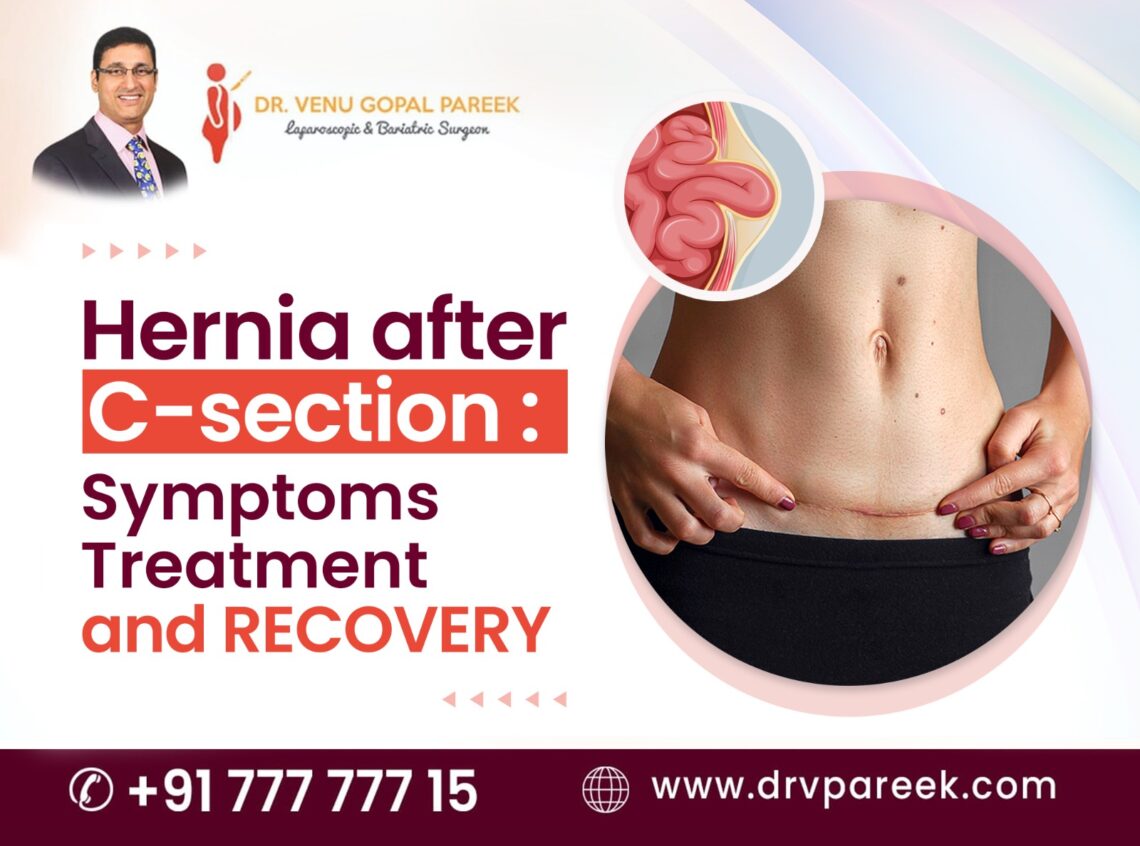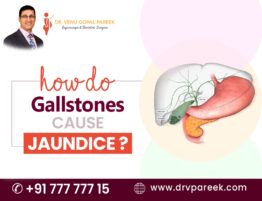
A hernia is defined as a bulge or lump that occurs when an inside part of your body protrudes through a weak muscle wall or tissue that contains it. Most of the time, hernias occur in the abdominal area, where some of the organs push through the weak walls of your abdominal cavity. Hernias are of different types, and the hernia that occurs near the incision after surgery is called an incisional hernia.
A C-section also known as cesarean delivery, involves making an incision in the abdomen and uterus of a female to deliver the baby. A hernia-related C-section is an incisional type hernia that develops near the C-section scar post-birth.
However, hernia after a cesarean section (C-section) is a rare complication observed in very few cases. In the case of this incisional hernia, the abdominal lining might protrude through the surgical incision.
Risk factors for developing a c-section hernia include:
- Women who are obese or overweight are at risk of placing added pressure on the stomach
- If the incisional area of the c-section is large
- Having diabetes
- Having weak abdominal tissue
In most cases, incisional hernias don’t cause symptoms other than their physical factors, although they cannot be cured without treatment. Surgery is the main treatment for an incisional hernia developed after a C-section.
Women who have had a midline incision during a cesarean delivery are more likely to develop an incisional hernia than women who have had transverse incisions. Around half of the women with incisional hernias may experience symptoms within the first year.
Symptoms of hernia after a cesarean delivery
The most common symptom of an incisional hernia is the appearance of a bulge near the surgical scar. The bulge size can range from being as small as a grapefruit to extremely large.
This hernia might grow over time or even change its position.
An incisional hernia will not develop instantly after a C-section; it develops months after having a baby. Typically, the following situations make it more visible:
- when you stand straight and tall
- when you lift any object above your head
- when you cough or sneeze
The abdominal skin might appear to be loose or bulging postpartum. This might sometimes confuse whether the female has hernia symptoms or is just healing from the surgery.
This incisional hernia can sometimes cause pain and discomfort, particularly if the bulge is more prominent. As the hernia related to C-section affects the areas around the stomach, it may cause nausea, vomiting, and constipation. These symptoms tend to be more intense if the hernia becomes strangulated or constricted. A strangulated hernia is a rare but severe condition that requires immediate medical attention.
Treatment for hernia after a C-section
Surgery is the main treatment option for any incisional hernia. However, doctors will not suggest hernia surgery unless the patient has certain symptoms or for any other personal reasons. Surgery is usually recommended if the hernia gets bigger and more visible, making it difficult to complete their regular activities, or if the hernia becomes incarcerated.
There are no medications available to make the hernia smaller. However, some patients use an abdominal binder (an elastic belt) to keep the hernia from protruding out. It might provide relief from symptoms, but it can’t make the hernia disappear. Surgery is the only option to reduce the appearance of the hernia.
The surgeon will recommend either an open or a laparoscopic procedure after thoroughly assessing the hernia and the patient’s overall health. An “open” surgical technique involves making a larger incision to fix the hernia. Laparoscopic surgery is a minimally invasive technique where small incisions are made to access and fix the hernia.
Typically, a surgical mesh is inserted in both the approaches, to reinforce the weak area and to hold it in place properly.
Recovery after hernia surgery
The majority of patients who undergo incisional hernia repair surgery recover quickly. Patients can walk around and go home within 24 hours after surgery. However, recovery will be longer if the hernia is large or complex. Pain and tenderness after surgery are normal.
Being active and following the doctor’s instructions after surgery helps speed up the recovery process and reduces the risk of post-surgical complications like blood clots. If you are in extreme pain or observed excessive bleeding or have a fever, consult your doctor as soon as possible.
People can return to their office work within a week or two. But if their work involves more physical activity, they may need to wait longer. The surgeon will clearly explain the recovery process and any precautions the patient should take both before and after the procedure.
For more detailed information about incisional hernia treatment, consult Dr. Venugopal Pareek, one of the best hernia surgeons in Hyderabad. He has more than 18 years of experience repairing the hernia through a laparoscopic approach. Call +91 9177777715 to make an appointment with the doctor.







